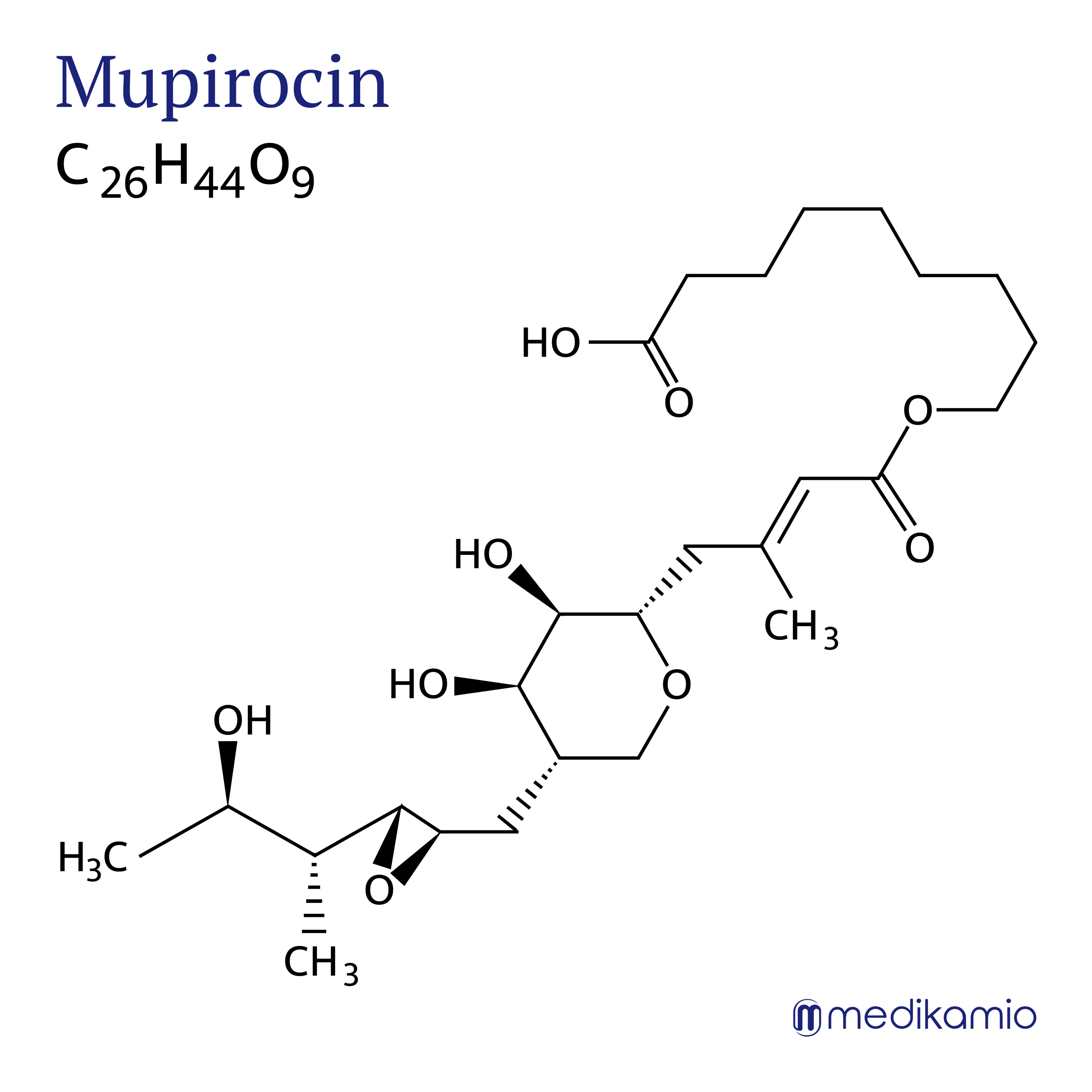Basics
Mupirocin is an active substance for the treatment of bacterial infections of the skin. It belongs to the group of antibiotics and is mainly effective against staphylococci and streptococci. Mupirocin is a metabolic product of Pseudomonas fluorescens, a bacterium. It is produced industrially via fermentation. Mupirocin is a broad-spectrum antibiotic and is effective against gram-positive bacteria and some gram-negative bacteria. There is no cross-resistance, which is a major advantage of mupirocin over other antibiotics. It is available on the market in the form of creams, ointments and nasal ointments, is present in medicines as mupirocin calcium and is a white powder that is very difficult to dissolve in water.

